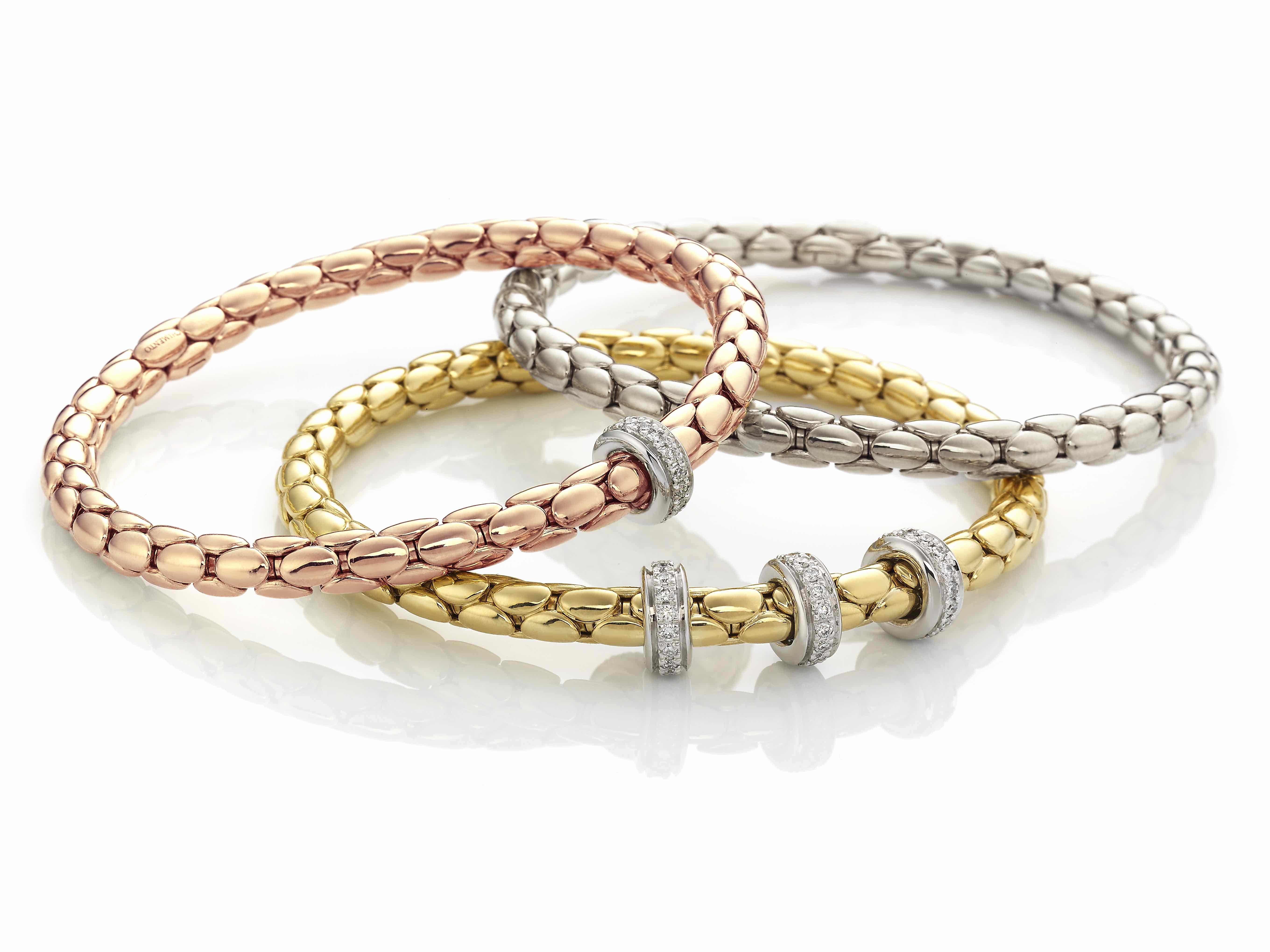The king of metals
Gold is considered the most noble metal, both for its value and for its intrinsic characteristics. Although we usually refer to gold in generic terms, every time we decide to buy jewellery made of this precious metal, we are actually making a more discreet choice between different colours and hallmarks.
From the classic and timeless yellow gold to the elegant and modern white gold, from the joyful and eccentric rose gold to the mysterious and deep burnished gold.
Gold has been known to man since prehistoric times, and over the centuries it has always been highly appreciated. It is very likely that gold was the first metal ever used by the human species (before copper) for manufacturing ornaments such as jewellery and other ritual objects.
But where and how is gold formed?
Unlike diamonds, gold isn’t created on Earth. This is because no geological process on Earth is capable of generating the energy that is necessary to produce this rare and precious metal. Gold literally comes from the stars.
It takes extraordinary and immense events such as stellar collapses to generate enough energy to allow the elementary particles to merge and transform into heavy elements such as gold.
In nature, gold exists only in the colour yellow. It is a rare soft, heavy, ductile and malleable type of metal, and all these properties make it easy to process and therefore very fragile.
The extreme malleability of gold is the reason why it is bound to one or more metals, enabling it to become more rigid and have greater mechanical resistance.
Pure gold can be laminated into a transparent sheet and one gram can be beaten into a sheet which can reach an area of up to one square meter.
The alloy with other precious metals is the reason why gold, by law, is always marked with a hallmark: a numerical mark that identifies the parts of pure gold on a scale of 1000.
In jewellery, for example, 750 gold (18 karat gold) is mainly used, which means jewellery featuring this hallmark is composed of 75% gold and 25% of other metals in order to make it resistant enough.
750 yellow gold will therefore be composed of 75% gold and the remaining 25% can be of a variable quantity of silver and copper.
Naturally, the percentage of gold in the alloy also affects the cost.
This is why you can find less precious alloys compared to 750 gold on the market. These alloys contain a lower percentage of gold compared to the common 75%; this is the case for the gold 585 (14 karat), 417 (10 karat) and 375 (9 karat). Each jewel produced with one of these alloys must have a clearly visible hallmark.

The colours of gold: yellow, white, pink, black
As we said at the beginning, gold can be found on the market in different colours, and the value of the alloy remains intact, but its aesthetic properties change: white gold, for example, contains a mix of silver and palladium instead of copper in its alloy. This gives white gold a colour that is very close to bright white. The other colours of gold play around with this percentage of metal in the alloy in order to find the degree of colour that is closest to the desired tone.
Nonetheless, in some cases finding the correct balance of the metals inside the alloy isn’t enough to give the gold the desired colour.
In the previous example of white gold, the alloy would always tend to turn towards yellow tones. In such cases the jewel is undergoes a procedure called galvanic bath, a fascinating electrochemical process.
The galvanic technique dates back to the end of the 1800s. Discovered and implemented by the physicist Luigi Galvani, it enables a metallic film to be applied to a material in order to modify its aesthetic performance.
In our case, the jewel is immersed in a tank containing a solution that includes the metal to be added. For white gold rhodium is used, a rare silvery-white metal, which thanks to this technique will be deposited on the whole surface of gold, giving it the classic colouring that we all know.
The processing of precious metals is considered a real art, but the mastery of this art also includes techniques and important scientific knowledge, and this only confirms the charm and complexity that every jewel, even the smallest, embodies.
CHIMENTO now makes its jewels using exclusively 18 kt gold, the most widespread alloy in Italy and in Europe, the same one with which our brand started its production in 1964 and which marked its continued great success.
Only between 2010 and 2014 were some collections produced in 9 kt gold, a choice motivated by the surge in metal prices which at that time had reached a record value never reached before.
Regardless of the composition of the alloy, with gold, as with diamonds and with all gems in general, it is important to first be aware of what you are buying.
It is therefore important to carefully check that the jewel always features the hallmark, and that it always corresponds with what the seller has told you or with the information shown on the package.










